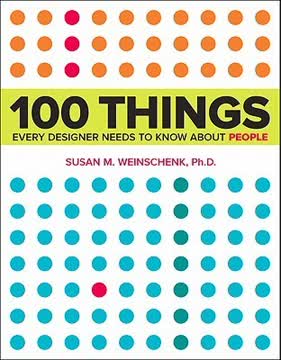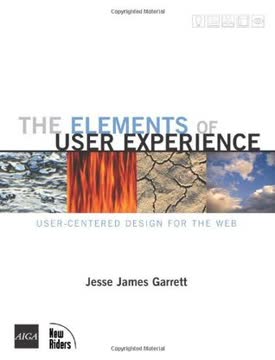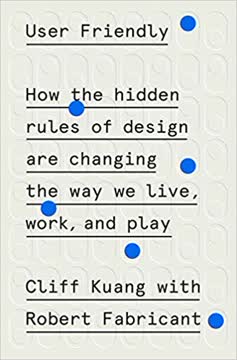Key Takeaways
1. Design impacts everyday life: Make the invisible visible
"If I were placed in the cockpit of a modern jet airliner, my inability to perform gracefully and smoothly would neither surprise nor bother me. But I shouldn't have trouble with doors and switches, water faucets and stoves."
Good design matters. The design of everyday objects significantly influences our daily experiences, often in ways we don't realize. When design is poor, we struggle with simple tasks and blame ourselves for incompetence. When design is good, actions become effortless and intuitive.
Visibility is key. A fundamental principle of good design is making important information visible. This includes:
- Clearly showing what actions are possible
- Making the results of actions obvious
- Providing feedback on the system's current state
- Revealing the conceptual model of how the system works
By making the invisible visible, designers can drastically reduce user frustration and errors, while enhancing efficiency and satisfaction in everyday interactions.
2. Bridge the gulfs of execution and evaluation
"The system should provide actions that match intentions. It should provide indications of system state that are readily perceivable and interpretable and that match intentions and expectations."
Mind the gaps. Two critical gulfs exist in user interaction:
- Gulf of Execution: The difference between the user's intentions and the allowable actions
- Gulf of Evaluation: The effort required to interpret the system state and determine if expectations were met
Bridging strategies:
- For execution: Provide clear affordances, constraints, and mappings
- For evaluation: Offer immediate, informative feedback on actions
- Use visual cues, sounds, and tactile responses to guide users
- Ensure the system's conceptual model aligns with the user's mental model
By addressing these gulfs, designers can create intuitive interfaces that feel natural and require minimal cognitive effort to operate.
3. Use constraints and affordances to guide user actions
"Use constraints so that the user feels as if there is only one possible thing to do—the right thing, of course."
Guide, don't restrict. Constraints and affordances are powerful design tools that subtly guide users towards correct actions without explicit instructions.
-
Constraints: Limit the possible actions to prevent errors
- Physical constraints: Shape and size that restrict incorrect use
- Semantic constraints: Rely on the meaning and purpose of the object
- Cultural constraints: Adhere to accepted conventions
- Logical constraints: Natural relationships between components
-
Affordances: Perceivable action possibilities
- Make desired actions obvious and inviting
- Discourage or hide undesirable actions
By skillfully employing constraints and affordances, designers can create objects that are self-explanatory and naturally lead users to correct usage.
4. Simplify tasks through natural mappings and conceptual models
"Make things visible, including the conceptual model of the system, the alternative actions, and the results of actions."
Intuitive connections. Natural mappings create clear relationships between controls and their effects, making systems easier to understand and use.
Examples of natural mappings:
- Steering wheel rotation corresponds to car's turning direction
- Stove knobs arranged to match burner layout
- Up/down motion for volume increase/decrease
Mental models matter. A good conceptual model helps users predict the effects of their actions. Designers should:
- Understand the user's existing mental models
- Create a clear system image that communicates the correct conceptual model
- Ensure consistency between the design model and the user's model
By leveraging natural mappings and providing clear conceptual models, designers can significantly reduce the learning curve for new objects and systems.
5. Design for error: Anticipate and mitigate mistakes
"If an error is possible, someone will make it. The designer must assume that all possible errors will occur and design so as to minimize the chance of the error in the first place, or its effects once it gets made."
Errors are inevitable. Rather than blaming users for mistakes, designers should anticipate and plan for potential errors.
Strategies for error-resistant design:
- Make actions reversible when possible
- Use forcing functions to prevent critical errors
- Provide clear, immediate feedback on actions
- Make it easy to discover and correct mistakes
- Use constraints to limit possibilities for error
Types of errors to consider:
- Slips: Unconscious errors in automatic behaviors
- Mistakes: Conscious errors due to incorrect decisions
By designing with error prevention and recovery in mind, systems become more robust, forgiving, and user-friendly.
6. Balance aesthetics with usability and functionality
"All great designs have an appropriate balance and harmony of aesthetic beauty, reliability and safety, usability, cost, and functionality."
Form and function. While visual appeal is important, it should not come at the expense of usability or functionality. Good design strikes a balance between:
- Aesthetics: Visual appeal and emotional satisfaction
- Usability: Ease of learning and efficient operation
- Functionality: Ability to perform intended tasks
- Reliability: Consistent and dependable performance
- Safety: Protection from harm or unintended consequences
- Cost: Economic feasibility for both producer and consumer
Designers must resist the temptation to prioritize aesthetics over other crucial aspects. A beautiful but unusable object fails in its fundamental purpose.
User testing is crucial. To achieve the right balance, involve real users throughout the design process. Their feedback can reveal issues that designers, too close to their creations, might overlook.
7. Standardize when necessary, but don't stifle innovation
"When something can't be designed without arbitrary mappings and difficulties, there is one last route: standardize."
Consistency vs. creativity. Standardization can greatly reduce cognitive load for users, especially for complex or arbitrary systems. However, it should be applied judiciously to avoid stifling innovation.
Benefits of standardization:
- Reduces learning time for new users
- Increases efficiency for experienced users
- Facilitates interoperability between systems
Risks of over-standardization:
- Can lock in suboptimal designs
- May hinder technological progress
- Potentially reduces differentiation between products
Timing is crucial. Standardize early enough to prevent chaos, but late enough to incorporate technological advancements. When standardizing, focus on critical interfaces and interactions while leaving room for innovation in other areas.
8. User-centered design: Prioritize the needs of the end-user
"The point of POET is to advocate a user-centered design, a philosophy based on the needs and interests of the user, with an emphasis on making products usable and understandable."
Users first. User-centered design places the needs, capabilities, and limitations of the end-user at the forefront of the design process.
Key principles of user-centered design:
- Involve users throughout the design process
- Conduct thorough user research and testing
- Design for a wide range of user abilities and contexts
- Prioritize usability and understandability
- Iterate based on user feedback
Challenges to overcome:
- Designers are not typical users
- Clients may prioritize other factors (e.g., cost, aesthetics)
- The complexity of modern systems
By consistently advocating for the user's perspective, designers can create products that are not only functional but truly enhance people's lives.
9. The power of feedback: Immediate and informative responses
"Feedback—sending back to the user information about what action has actually been done, what result has been accomplished—is a well-known concept in the science of control and information theory."
Close the loop. Effective feedback is crucial for helping users understand the results of their actions and the current state of the system.
Characteristics of good feedback:
- Immediate: Provided as soon as the action is performed
- Clear: Easily perceivable and interpretable
- Relevant: Directly related to the user's action and intent
- Appropriate: Matches the importance of the action
- Multi-modal: Can use visual, auditory, and tactile cues
Beyond confirmation. Feedback should not only confirm that an action was received but also provide information about its effect and any next steps required.
Examples of effective feedback:
- Tactile click when pressing a button
- Visual highlight of selected items
- Progress bars for long-running operations
- Error messages that explain the problem and suggest solutions
10. Exploit knowledge in the world to reduce cognitive load
"I have argued that people learn better and feel more comfortable when the knowledge required for a task is available externally—either explicit in the world or readily derived through constraints."
Offload memory. By leveraging information present in the environment, designers can reduce the mental effort required to use a system.
Strategies for exploiting knowledge in the world:
- Use visible and intuitive controls
- Provide clear labels and instructions
- Employ cultural conventions and metaphors
- Design affordances that suggest proper usage
Balance internal and external knowledge. While external cues are valuable, some internalized knowledge can lead to more efficient operation. The ideal design allows for both:
- Easy initial use through external cues
- Efficient expert use through internalized patterns
By thoughtfully distributing knowledge between the user's mind and the environment, designers can create systems that are both easy to learn and powerful to use.
Last updated:
FAQ
What's The Design of Everyday Things about?
- Focus on Usability: The book emphasizes designing everyday objects to be user-friendly and intuitive, exploring how design affects our interactions with objects and systems.
- Human-Centered Design: Donald A. Norman advocates for a user-centered design philosophy, prioritizing user needs and experiences over aesthetic or technical considerations.
- Error and Design: Norman discusses how errors are inevitable in human interaction with systems and how good design can minimize these errors, making tasks easier and more efficient.
Why should I read The Design of Everyday Things?
- Improve Design Understanding: The book enhances your understanding of design principles and their application to everyday objects, providing insights into creating user-friendly products.
- Learn from Mistakes: It discusses common design errors and how to avoid them, encouraging critical thinking about the objects we use daily.
- Applicable Across Disciplines: The principles are relevant not only to designers but also to engineers, architects, and anyone involved in product development, promoting a holistic view of design.
What are the key takeaways of The Design of Everyday Things?
- Design for Usability: Good design should prioritize usability and user experience, with Norman stating that design failures are often the fault of the design, not the user.
- Importance of Feedback: Effective design must provide clear feedback to users about their actions, helping them understand whether their actions have been successful.
- Natural Mappings and Constraints: Norman emphasizes the significance of natural mappings and constraints, which help users intuitively understand how to interact with objects.
What are the best quotes from The Design of Everyday Things and what do they mean?
- “Design is really an act of communication.”: This highlights that design should convey information about how to use an object effectively, communicating its purpose and function clearly.
- “Errors are not just the result of human failure; they are often the result of poor design.”: This statement emphasizes the responsibility of designers to create systems that accommodate human limitations.
- “Good design is a lot like clear thinking made visual.”: This reflects the idea that effective design should communicate its purpose and function clearly, enhancing user understanding.
How does The Design of Everyday Things address human error?
- Types of Errors: Norman distinguishes between slips (errors in execution) and mistakes (errors in planning), emphasizing that many errors are due to poor design.
- Design for Error: The book advocates for designing products that anticipate user errors and minimize their impact, highlighting the need for error-tolerant designs.
- Feedback Mechanisms: Effective feedback is crucial for helping users recognize and correct errors, preventing confusion and frustration.
What is user-centered design in The Design of Everyday Things?
- Focus on User Needs: User-centered design prioritizes the needs, preferences, and limitations of end-users throughout the design process.
- Iterative Testing: This approach includes iterative testing and feedback from users to refine designs, creating more effective and satisfying products.
- Accessibility and Usability: It aims to make products accessible and usable for a wide range of people, including those with disabilities, promoting inclusivity.
What are the main concepts discussed in The Design of Everyday Things?
- Affordances: This concept refers to the perceived and actual properties of an object that suggest how it can be used, like a button affording pushing.
- Constraints: Norman categorizes constraints into physical, semantic, cultural, and logical types, guiding user behavior and reducing errors.
- The Seven Stages of Action: This framework outlines the process users go through when interacting with objects, helping designers create more intuitive products.
How does The Design of Everyday Things suggest improving everyday tasks?
- Simplifying Structures: Norman advocates for simplifying task structures to minimize cognitive load, breaking tasks into smaller, manageable steps.
- Using Constraints: The book emphasizes using natural and artificial constraints to guide user actions, reducing the likelihood of errors.
- Designing for Flexibility: Designs should be flexible enough to accommodate different user needs and preferences, enhancing usability and satisfaction.
What role does visibility play in design according to The Design of Everyday Things?
- Enhancing User Understanding: Visibility helps users understand what actions are possible and what the outcomes will be, making informed decisions.
- Bridging the Gulfs: It helps bridge the "gulf of execution" and "gulf of evaluation," making interactions more intuitive and less error-prone.
- Feedback Mechanisms: Effective designs provide immediate and clear feedback, allowing users to see the results of their actions and adjust accordingly.
How can I apply the concepts from The Design of Everyday Things in my own work?
- User-Centered Design: Focus on user needs and behaviors when designing products, conducting user testing to gather feedback and improve usability.
- Simplify Interactions: Reduce complexity in user interactions by using natural mappings and clear feedback, ensuring users can easily operate your product.
- Observe User Behavior: Pay attention to how users interact with your designs, using this observation to identify pain points and areas for improvement.
What are some examples of poor design discussed in The Design of Everyday Things?
- Norman Doors: These are doors difficult to open due to poor design, often leading to user frustration, illustrating how design can fail to consider user needs.
- Complex VCRs: The book discusses how VCRs often have complicated programming processes that confuse users, highlighting the need for clearer interfaces.
- Ambiguous Light Switches: Many light switches do not clearly indicate which light they control, emphasizing the importance of visibility and natural mapping.
What are the implications of design on society as discussed in The Design of Everyday Things?
- Influence on Behavior: The design of everyday objects can significantly influence human behavior and societal norms, promoting efficiency or leading to frustration.
- Cultural Reflections: Design often reflects cultural values and priorities, shaping how people interact with technology and each other.
- Accessibility and Inclusion: Good design should consider the needs of all users, including those with disabilities, leading to a more equitable society.
Review Summary
Readers praise Norman's insightful analysis of everyday design flaws and his accessible writing style. Many find the book eye-opening, changing how they perceive and interact with objects around them. While some criticize dated examples, most agree the principles remain relevant. The book is widely recommended for designers and non-designers alike, though a few find it repetitive or overly academic.
Similar Books










Download PDF
Download EPUB
.epub digital book format is ideal for reading ebooks on phones, tablets, and e-readers.






